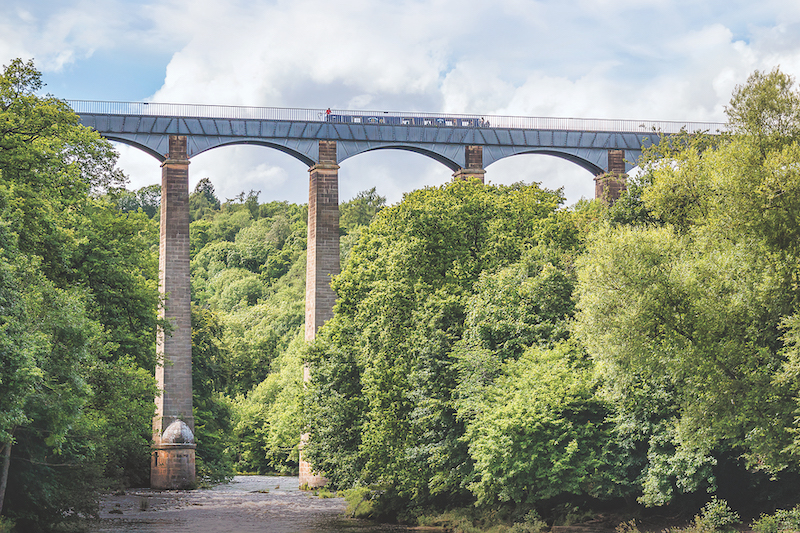The Pontcysyllte Aqueduct caught the imagination of our Facebook followers recently – there’s a fair few of you who have braved the heights and admired the views from this impressively high structure.
Top facts about the Pontcysyllte Aqueduct
The aqueduct carries the Llangollen Canal over the valley of the River Dee in Wrexham County Borough in north east Wales. Completed in 1805, it is the longest and highest aqueduct in Britain, a Grade I Listed Building and a World Heritage Site.
It was built by Thomas Telford and William Jessop and is 1,007 ft (307 m) long, 11 ft (3.4 m) wide and 5.25 ft (1.60 m) deep.
It consists of a cast iron trough supported 126 ft (38 m) above the river on iron arched ribs carried on nineteen hollow masonry piers (pillars).
Each span is 53 ft (16 m) wide. Despite considerable public scepticism, Telford was confident the construction method would work. Part of what was originally called the Ellesmere Canal, it was one of the first major feats of civil engineering undertaken by Telford, by then a leading civil engineer, supervised by Jessop, the more experienced canal engineer. One of the scariest facts is possibly that the lime mortar used lime, water and ox blood!
It was opened on 26 November 1805, having taken around ten years to design and build at a total cost of £47,000. Adjusted for inflation this is equal to £2,930,000!
If you want to walk across the Pontcysyllte Aqueduct you can. The towpath is mounted above the water, with the inner edge carried on cast-iron pllars in the trough. Pedestrians, and the horses once used for towing, are protected from falling from the aqueduct by railings on the outside edge of the towpath.
Every five years the ends of the aqueduct are closed and a plug in one of the highest spans is opened to drain the canal water into the River Dee below, for inspection and maintenance of the trough.
The aqueduct was inscribed by UNESCO on the World Heritage List on 27 June 2009, alongside previously inscribed sites such as the Taj Mahal, Great Wall of China and Stonehenge.
Walks to the Pontcysyllte Aqueduct
There are a number of different walking trails around the Pontcysyllte Aqueduct. Some of the trails are short and easy, while others are longer and more challenging. There are also a number of different trails that offer different views of the aqueduct.
If you are looking for a short and easy walk, then the Pontcysyllte Aqueduct Path is a great option. This path is a 2-mile loop that follows the towpath of the Llangollen Canal. The path is flat and easy to walk, and it offers stunning views of the aqueduct.
If you are looking for a longer and more challenging walk, then the Pontcysyllte Aqueduct Circular Walk is a great option. This walk is a 7-mile loop that takes you around the aqueduct. The walk is hilly and challenging, but it offers some of the best views of the aqueduct.
No matter what your fitness level, there is a walking trail around the Pontcysyllte Aqueduct that is perfect for you. So put on your walking shoes and explore this amazing UNESCO World Heritage Site. Find out more about walks from Llangollen to the Pontcysyllte Aqueduct here.
WHERE WILL YOU START?
Take a look at our LOCATIONS page to start planning your narrowboat holiday.
Or if you would like help planning your adventure then call on +44 (0)1527 575 115 and a Black Prince team member will be happy to help!




